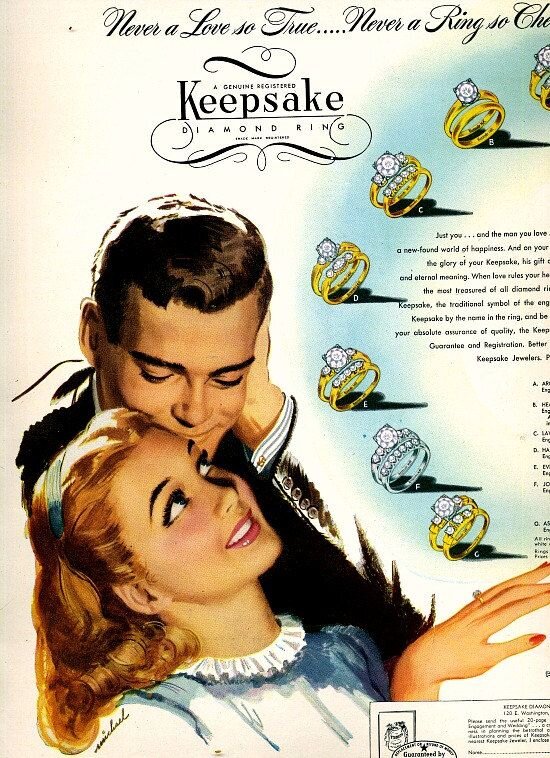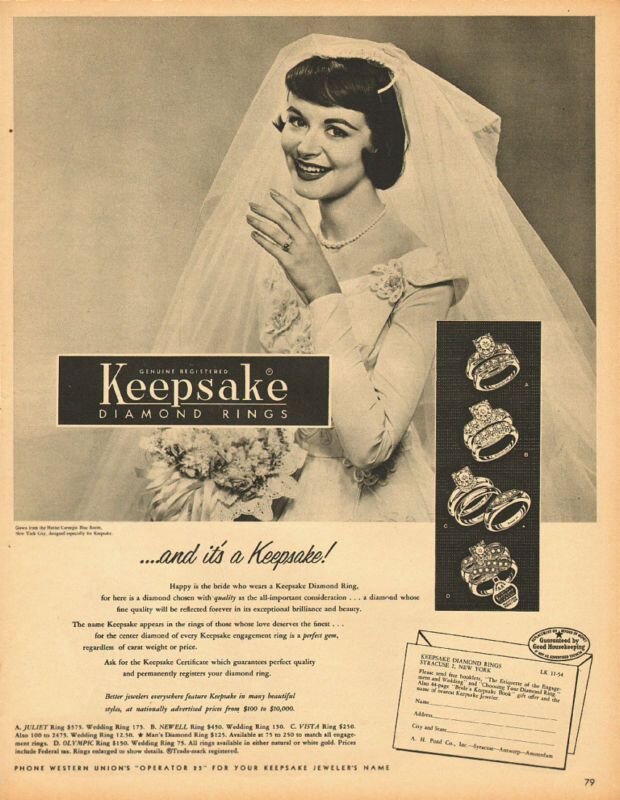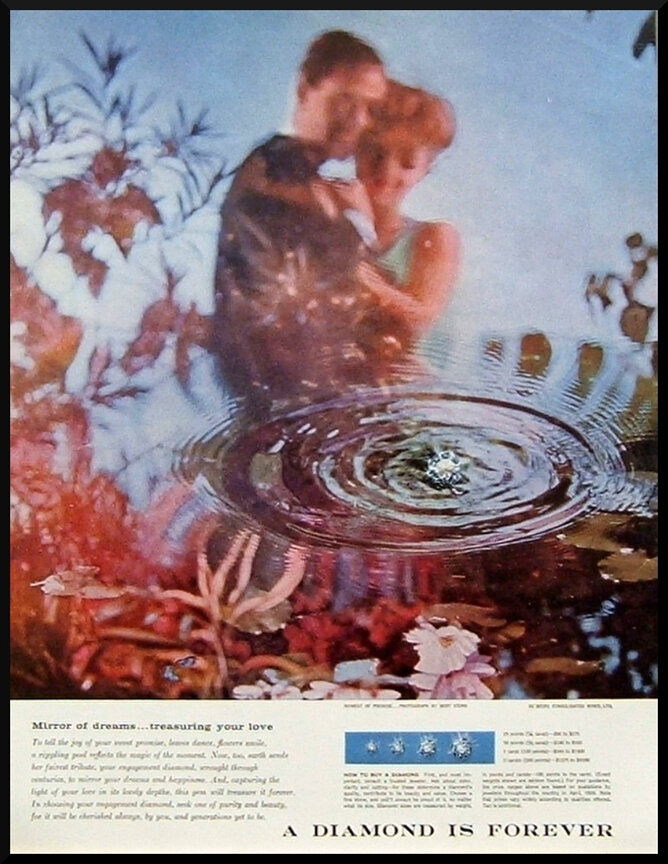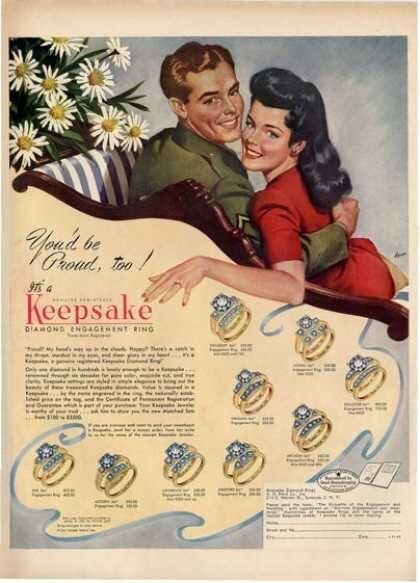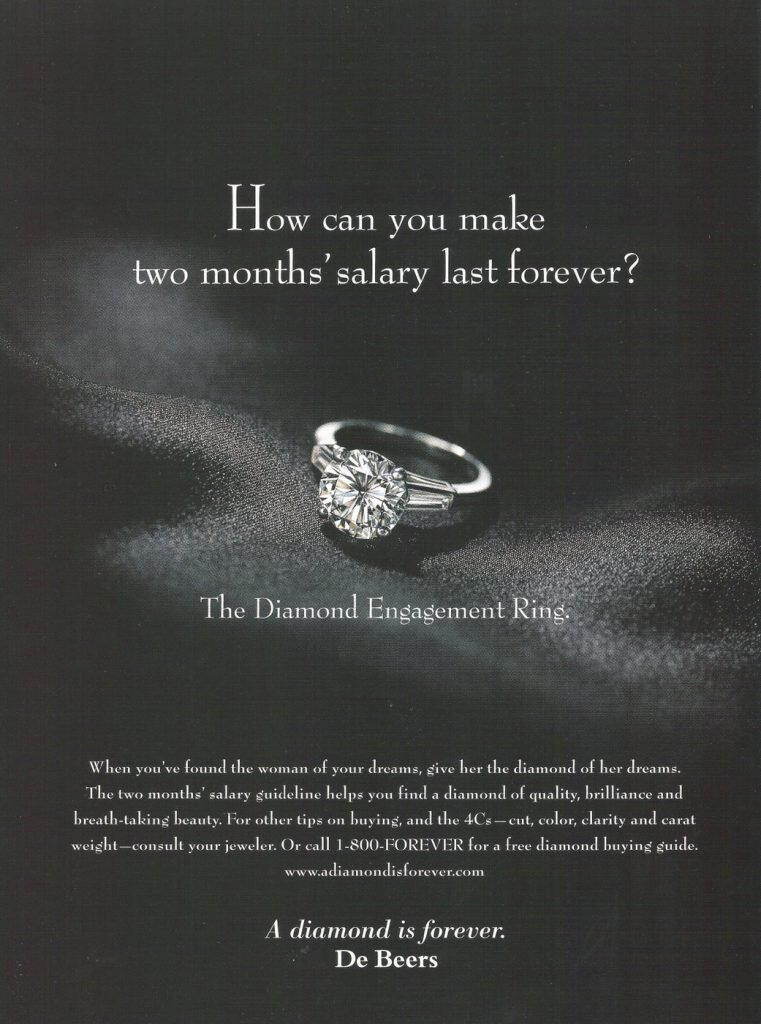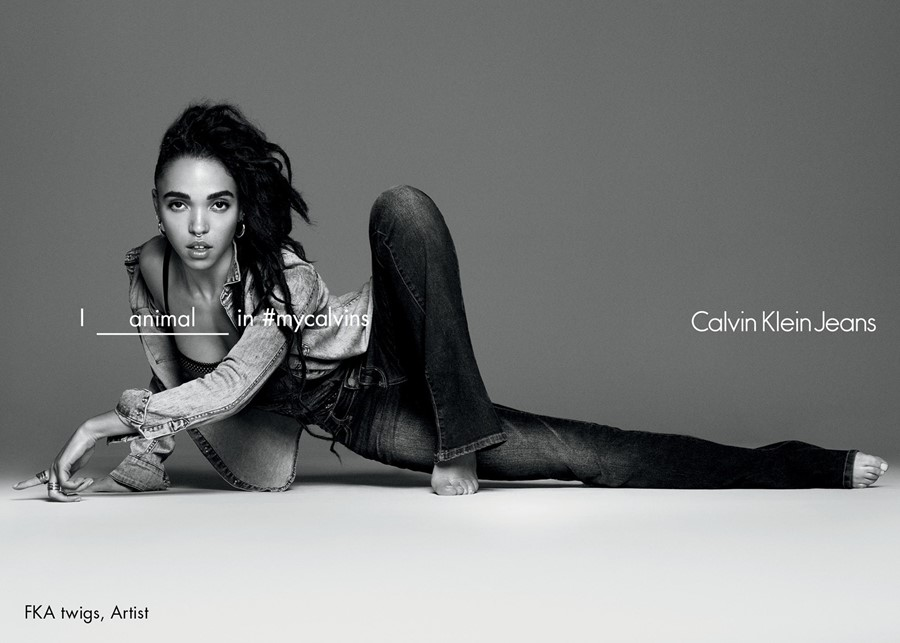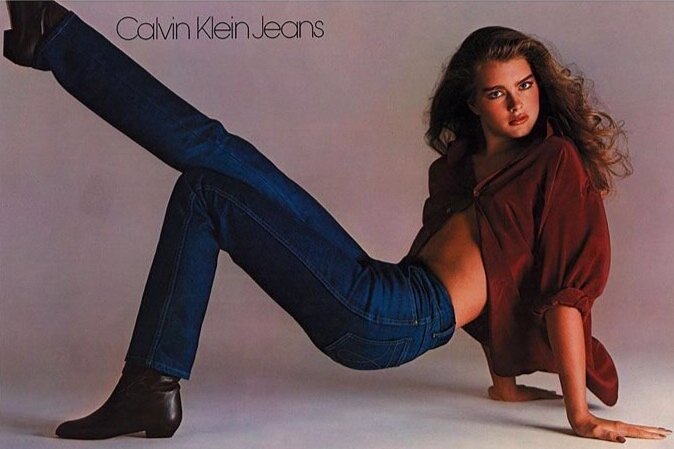Are Styles Classic or Just Well-Advertised?

The majority of people in the Western world, including me, look forward to the day they can display their love for someone by wearing a diamond ring. The cut, carat size, and band pairing are all heavily debated, but the actual stone is never questioned. Diamonds symbolize eternal love in contemporary society. It is one of the only style phenomena that crosses socioeconomic status, age, and race. But why a diamond? Why not a sapphire, an emerald, or a ruby?
Advertising is the culprit. Before the 1950s, diamonds were not the unanimous standard of marriage. This changed when DeBeers, the international diamond enterprise, launched their legendary slogan “Diamonds are Forever,” pushing the idea that the only way to show that the permanence of love is to represent it with diamonds. DeBeers also paid celebrities to use diamonds in their engagement and wedding rings. Within three years, diamond sales went up 50%. So, it begs the question:if something like a diamond engagement ring, now an immovable staple of our culture, was instilled in society through marketing giants, what about other so-called classic designs today?
We are drawn towards certain designs because they are regarded as “classic.” But what does that really mean beyond recognition? The fitted white t-shirt and a pair of jeans is an example; it’s not necessarily original, but will always be a solid outfit. What makes this combo immune to other criticisms of similar outfits? Jeans aren’t much different from chinos, yet they’ll always be superior according to fashion’s public opinion. The answer is again advertising.
Originally, jeans were worn for practical use by manual laborers and service workers, but gained traction in the greater population during the ‘50s, when they began to be worn in movies, and even more so in the ‘80s after the iconic spread of sexually charged Calvin Klein ads featuring Brooke Shields. During the time these ads were aired, jean sales jumped 800%. Similar Calvin Klein ads launched their underwear into immortality with shoots then featuring Mark Wahlberg and Naomi Campbell, and now Shawn Mendes and Odell Beckham Jr. It makes you wonder—do we really love a crisp white tee and rough pair of denim, or were we just calibrated to think that way?
High fashion is no exception. In fact, people are even less likely to use their artistic curiosity when buying high fashion items because normally it’s a splurge purchase, and they want the piece to have versatility and brand recognition. Atelier brands like Cartier and Louis Vuitton have been reduced to nail-head bracelets and oversized shoulder bags. The most notable instance of this is the Cartier Love Bracelet. Nowadays, they are stacked in multiples on any millennial celebrity’s wrist. But when the bracelet was first released, the concept was that a couple would gift each other a bracelet and would screw the bracelet onto their partner’s wrist, then keep the screwdriver so there was a constant presence of their love on their partner’s wrist. Although the design seems timeless, it debuted just over 50 years ago. The jewelry house created this timelessness through the endorsement of famous couples of the time, like Elizabeth Taylor and Richard Burton, who exchanged bracelets and wore them publicly. Many of these couples took this physical commitment seriously. Ali McGraw famously wore only her Love Bracelet during a nude scene in the 1972 film The Getaway. Socialites Frank Shields and Diana Lippert even exchanged these bracelets instead of rings during their wedding ceremony. While Cartier may have almost a dozen different jewelry collections, some that probably have higher artistic value than the Love Bracelet, these will always be overshadowed by the widely advertised and now ubiquitous status symbol.
The term classic often implies the sensible and timeless taste of the wearer. But what governs what specific designs are class? It’s almost as if we are socialized to automatically accept certain designs over others. In fact, that is almost exactly what happens through marketing. By using iconic stars of each generation, companies propel certain collections into popular demand. However, we are a new generation dominated by YouTube stars and Instagram influencers--ordinary people with superstar capabilities. Now, we have the potential to determine the new classic standards for future generations.

